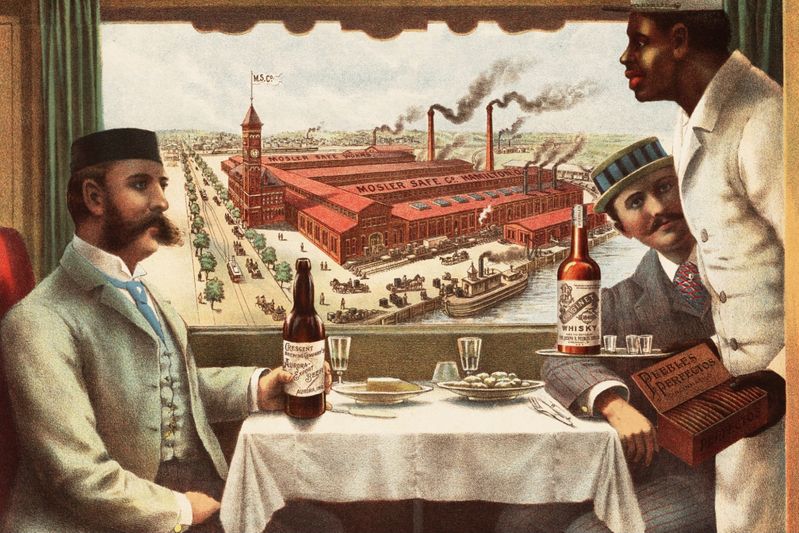Publication date December 1, 2023
To Tip or Not to Tip? Observing the Changing Landscape of Tipping Culture in America
Should I tip or not to tip? This question has sparked heated debates for generations. While some argue that tipping empowers customers to reward exceptional service, others say it’s an outdated practice that undermines the dignity of workers.

Recommended articles
You may surprised to know that tips in U.S. restaurants alone generate around $26 billion annually and adding tips in other fields and countries clearly results in much higher numbers.
Millions of workers, especially taxi drivers and waiters, depend heavily on tip income. Today, tipping has become the norm in numerous situations.
A majority of Americans say they’re being asked to tip service workers more frequently than in the past year. But even though they say they’re being asked to tip more often, relatively only a few have a great understanding of when and how to do so.
Here’s everything you need to know about tipping culture in America that will help you decide how you should tip or not.
History of Tipping Culture
Understanding the history of tipping can help you identify the biggest reasons for tipping and observe whether they changed over time. If most people tip because of social norms and feelings, it suggests that norms and feelings may be the reasons for other economic behaviors as well.

Sources suggest that there are a few versions of the origin of tipping culture.
People say that the tipping was known as far back as the Roman era and is probably much older.
While some studies found that tipping originated back in the days of feudal lords. When lords met groups of beggars along their way, they used to toss the beggars coins in an attempt to buy a safe passage. However, if this type of payment should considered as tipping, it can be an arguable topic for many.
Eventually, towards the end of the 1890s, a tipping culture in America was established, involving many workers and large amounts of money. Another study claims that during the early 1910s, it was estimated that 5 million American workers, more than 10% of the labor force had tip-taking occupations.
How do People feel about Tipping?
According to a recent Bankrate survey published in May, roughly two out of three (66%) US adults have a negative view about tipping and nearly 1 in 3 (30%) say “tipping culture has gotten out of control.”
Americans say they believe businesses such as restaurants should pay employees better rather than relying so much on tips (41%), they also feel annoyed when they see pre-entered tipping screens (32%). People are often confused about who and how much to tip (15%) and they would be willing to pay higher prices if they could do away with tipping (16%).
But, despite this annoyance, Americans haven’t stopped tipping for everyday services. More than 44% of US adults who dine at sit-down restaurants commonly tip at least 20%.
However, it’s worth noting this percentage of people fell from 73% in 2022 to 65% in 2023. Over three-fourths (77%) of people who dine at sit-down restaurants always tipped their server in 2019.
Similarly in other fields such as food delivery workers, and taxi or rideshare drivers, this trend is happening. And majorly, the percentage of Americans who always tip their hair stylists, hairdressers, or barbers fell from 66% in 2022 to 53% in 2023.
The Positive side and Drawbacks of tipping
Positive Side of Tipping
Tipping does have a positive effect on many. For example, a tipping or gratuity-based system gives staff a chance to incentivize, encouraging them to go the extra mile to offer excellent service. For example, a gratuity-based system incentivizes staff, encouraging them to go the extra mile to provide excellent service.
There is no research to support this, but some results suggest that the number of customers decreased in some restaurants when the tipping system (tipping chart or tipping screen) was removed and service changes were implemented which resulted in higher prices.
As an added bonus point to restaurant owners, workers are likely to up-sell more expensive items to drive up the final cost of the bill and, in turn, the tip.
While you may consider tipping as a way to appreciation for workers, it also has some drawbacks:
Drawbacks of Tipping
The most noticeable drawback of tipping culture in America is that it drives inequality, promoting age, race, and gender biases and also huge pay discrepancies. Adding this tipping directly into prices can help eliminate these issues and ensure a predictable and fair wage for all.
As mentioned in a New York Times article, young blond women are tipped more than older brunettes. It suggests that tipping can result in a sexist dynamic between cash-wielding male patrons and female servers.
When it comes to ride-sharing, Uber riders tip female Uber drivers 12% more than male drivers. Additionally, African-American and Latino workers are tipped much less than their white counterparts.
Aside from this, tipping creates a huge pay gap within the hospitality industry itself. Customer-facing staff (Front-of-house employees ) earn much more money than back-of-house employees (line cooks, dishwashers).
Does Tipping really improve Service?
After going through many studies it appears that yes tipping really improves services. It is one of the primary justifications for tipping that it promotes better service, by giving the servers an incentive to do their best to satisfy the customer's needs.
People who are against tipping can still argue that the quality of service provided by restaurant servers or taxi drivers doesn’t exceed the quality offered by lawyers, accountants, and flight attendants even though the latter group is not tipped.
How & How Much Should You Tip?
When it comes to how much should you tip, Bankrate Senior Industry Analyst Ted Rossman says, generally for things like sit-down restaurant meals, haircuts, and taxis, a 20% tip is recommended.

Sadly, many Americans are tipping far less, sometimes even nothing at all. But as general tipping culture etiquette always consider a 20% tip because these people are working hard and depend on tips as a big portion of their salary. He says.
In case you receive poor service, try to show some empathy to the servers and bring up your complaint with them before leaving a small, or no tip.
On that note, here are some guidelines that can help you get started nicely and without feeling like you have to stick to them if a worker gives excellent service and you want to show your appreciation.
- Don’t treat tipping as optional: Never regard tipping as optional whenever you go to a restaurant because many workers rely on them to earn a living.
- Check the bill carefully: Some restaurants might automatically add a gratuity to the bill. So make sure that you check the bill carefully before adding an additional tip.
- Tip according to the service provided to you: The more you feel that skill and experience are going into service, the more you should consider tipping. If there is a worker with whom you have a personalized relationship who knows your preferences also earn a bigger tip, since they can provide knowledgeable advice and higher-quality services.
- Be generous: Tipping can be a great way to show appreciation for the good service provided by workers, so if you can afford it, be generous with your tips.
Frequently Asked Questions
Q. What is a tip?
A tip is money that a customer leaves for a worker in addition to the standard cost of a service or product. This tip belongs to the employee such as an Uber driver, a restaurant server, or a hairdresser not to the employer.
Q. What is a digital tip?
Digital tipping or digital tip payment is the digital transfer of tip payments from customers to workers.
Q. How do Americans tip in 2023?
Tipping culture in America is constantly evolving, with new trends and new rules of tipping emerging in 2023. Here is the overview of how Americans tip in 2023:
- Restaurants: If you’re at sit-down restaurants with table service, a tip of 15-20% of the pre-tax bill remains the standard. For counter-service restaurants without table service, a tip of 10-15% is commonly appropriate.
- Bars: A tip of $1-2 per drink for bartenders remains common.
- Hotels: A tip of $1-2 per night for housekeeping is standard.
- Salons: A tip of 15-20% of the service charge is standard for hairdressers, barbers, and manicurists.
- Uber and Lyft: A tip of 15-20% of the fare is standard for Uber and Lyft drivers.
Q. Why do Americans tip?
One of the main reasons why Americans tip workers is to appreciate them for providing good service or consider it as a social norm. Also, many people say that they tip to ensure that they’ll get excellent or better service in the future.




